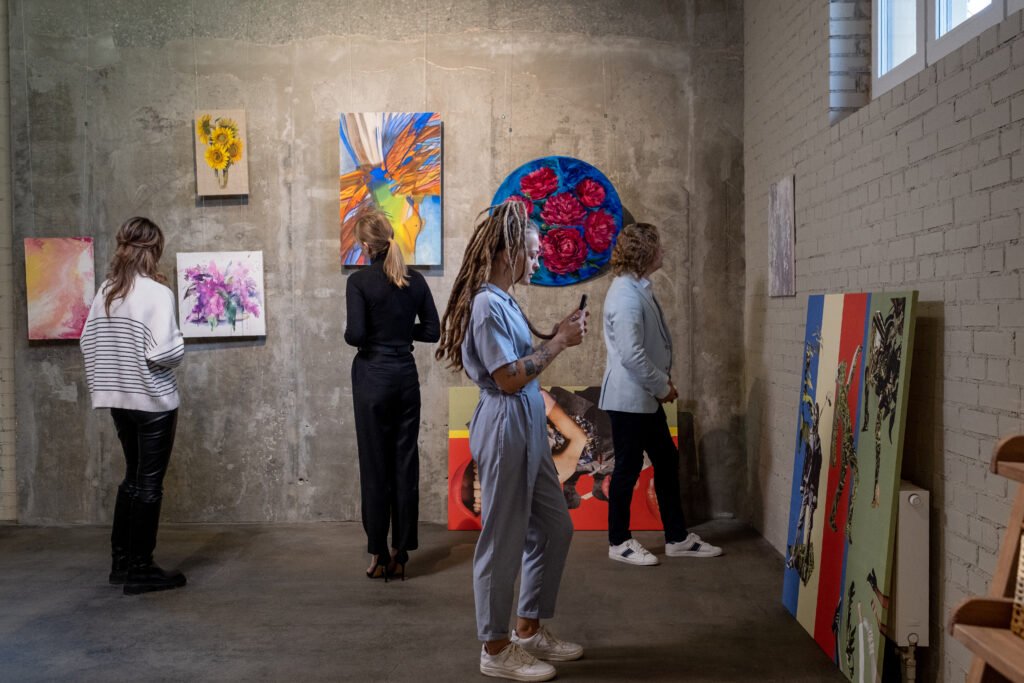Modern art currently holds one of the most prestigious places within the universe of luxury and sophistication. Far beyond its aesthetic or historical value, it represents status, influence, and decision-making power.
What began as a break from the academic standards of traditional art at the end of the 19th and beginning of the 20th centuries now appears in exclusive galleries, billionaire mansions, fiercely contested auctions, and high-end brand collections.
What draws attention is how modern art managed to become both a highly desired asset in the art market and a symbol of social affirmation. This transition did not happen by chance.
It is a direct result of an economic and symbolic movement that consolidated art as a language of prestige in the contemporary world, alongside fashion, architecture, and design.
The Million-Dollar Valuation of Modern Art in the Art Market
By observing the biggest auctions of the last decade, one can perceive the economic force modern art exerts. Works by artists like Pablo Picasso, Mark Rothko, and Andy Warhol easily surpass prices of one hundred million dollars. This is not just artistic recognition but the consolidation of an extremely sophisticated global market.
These transactions involve private collectors, international museums, and financial investors attentive to the potential appreciation of the artwork.
The art market has realized that modern works have unique qualities: they are limited, carry historical narratives, and remain influential even after decades.

Luxury brands also play a fundamental role in this process. The Louis Vuitton Foundation, for example, in Paris, not only exhibits modern and contemporary art but also transforms them into immersive and sophisticated experiences. The relationship between art and luxury brands further strengthens this perception of art as an element of exclusivity, elegance, and power.
Art, Investment, and the New Global Collecting
Modern art has come to occupy a strategic position in the portfolios of major investors worldwide. Unlike other assets, it combines historical value, permanence, and symbolic prestige.
Moreover, it offers something rare: the ability to generate visual and intellectual impact, something increasingly valued in high-net-worth circles. Today, those who invest in modern art are also positioning their personal or institutional image as individuals with vision and cultural refinement.
As a result, new figures have emerged in the collecting universe. They are not just traditional dealers or heirs of aristocratic families. Technology executives, fashion entrepreneurs, elite athletes, and pop artists also compete for works in galleries and auctions.
This new global collecting has boosted the international circulation of modern art, consolidating its presence in hubs such as New York, London, Hong Kong, and Dubai.
At the same time, contemporary art benefits from this movement. Many current artists directly engage with the modernist legacy, both in form and concept. The boundary between modern and contemporary thus becomes fluid, further expanding the art market’s reach.
For many collectors, investing in a modern work is also affirming a deep understanding of art as a continuous and ever-transforming process.
Art as a New Language
It is important to emphasize that this appreciation does not mean that art has lost its critical character or questioning function. On the contrary, part of its current prestige comes precisely from its ability to provoke, reflect, and reinterpret the world.
Modern art, by deconstructing conventions and proposing new perspectives, becomes even more relevant in a world that values discourse, narrative, and originality.
Thus, modern art reaffirms its position as one of the most powerful languages of contemporary luxury. It brings together beauty, history, provocation, and prestige in a single visual experience.
In a scenario where symbolic capital becomes increasingly important, owning an original modernist work is also an act of personal and cultural affirmation. For this reason, modern art remains an absolute reference in the art market and in the imagination of global luxury.



